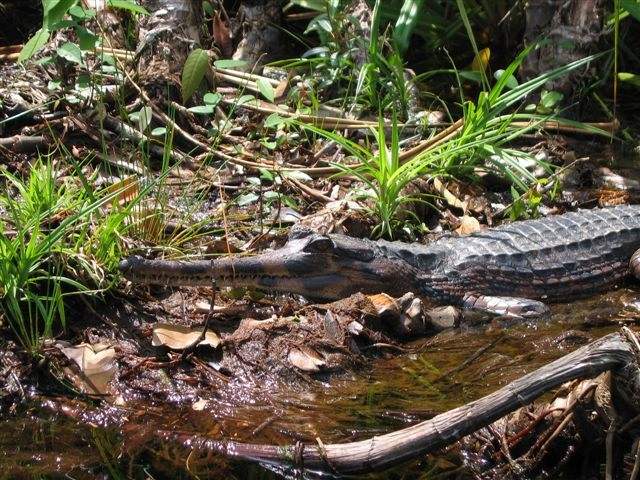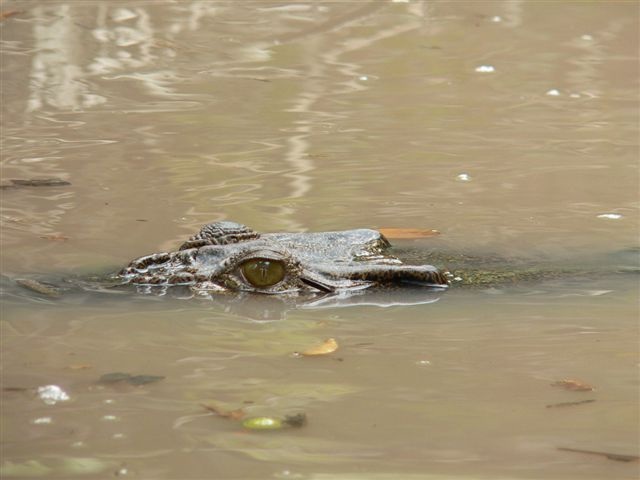A very rare crocodile
Compared with the week before, when I spent four days out of six in the field, this week seems to have been very office bound with only one visit to the Orangutan Care Centre. I guess that is what happens as audit-time approaches. One exciting thing did happened. Rene Bonke, a German PhD student arrived to begin research into the ecology of the Malaysian False Gharial (Tomistoma schlegelii), one of the world’s rarest crocodiles. 
Malaysian False Gharial (Tomistoma schlegelii)
Rene will be spending the next three months at Pondok Ambung Research Station in Tanjung Puting National Park (TPNP). Earlier studies, on which we also collaborated, found “the highest ever recorded density of wild Tomistoma” on the river system leading to Pondok Ambung and Camp Leakey.
Tomistoma are easily distinguished from the other species of crocodile found locally, the saltwater or estuarine crocodile (Crocodylus porosus).
Top photo large Tomistoma on Sekonyer and one below saltwater crocodile (Crocodylus porosus) - not so sweet!
Tomistoma, like the true gharial of India, have slender snouts which are an adaptation for catching fish, their main prey. Tomistoma can reach lengths of over 5 m. Individuals of that size are rarely seen, but we know of a very large one on the Sekonyer River.
One of the residents in the Sekonyer River, TPNP
Tomistoma have never been known to attack people, though they have been recorded catching swimming monkeys. By comparison, saltwater crocodiles can be aggressive and extremely dangerous. Unfortunately one actually took a tourist in 2002. As the sign at Pondok Ambung says “There is a reason why crocodile researchers come here: No Swimming!”
Tomistoma - Photo by Mark Auliya
Sheryl, thank you for your offer of a donation. I read your blog on your visit to the Centre for Great Apes. I hope you are not too offended by chimps spitting because orangutans do it too. And they blow raspberries…
For more information Tomistoma Task Force



